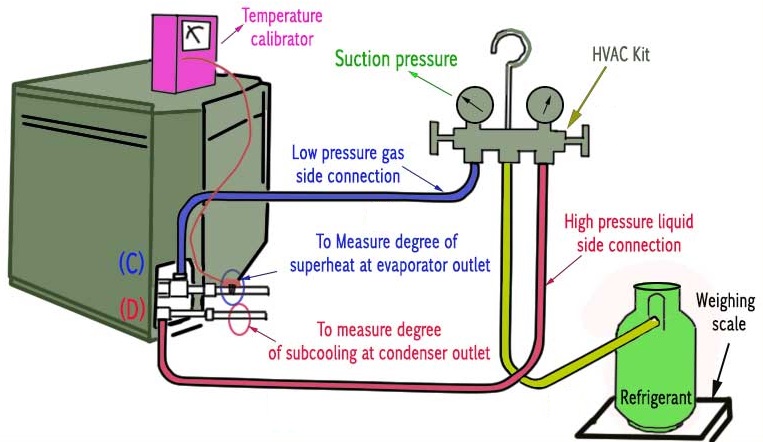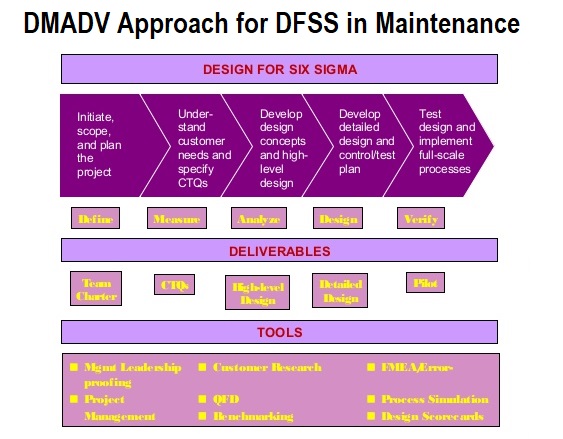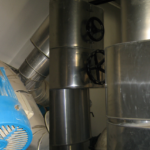This document is intended to provide an outline to the work scope and details of the overall method for the maintenance works, it will be issued to clients upon request and held by the contract manager and relevant competent persons.
It is not intended to be a step by step instruction manual, as the work will be carried out by competent and experienced persons who are able to adapt their working practices to various site conditions and situations via safe system of work and dynamic risk assessment.
Document Index
1. Description of Work.
2. Site Specific Information / Work Procedures.
3. Important Contacts.
4. Risk Assessment and Hazards Identification Processes.
5. General Safety Considerations.
6. Common Practice / Standard Procedures.
7. Associated Documents, Drawings.
8. Job Specific Details
1. Description of Work.
In most instances the work scope will be site defined and not fully determined until the service engineer have attended site, spoken to the site contact and carried out an initial point of work assessment.
This document covers standard service and maintenance activities on a wide range of refrigeration, air conditioning and ventilation equipment in most commercial and light industrial applications.
If once the initial engineers survey identifies extraordinary circumstances that require additional consideration in terms of Health, Safety or Environmental protection this should be referred to the relevant service / branch manager before proceeding with the works.
2. Site Specific Information / Work Procedures.
2.1. Site engineer will report to the site contact / site security upon arrival at the site. As required the necessary sign in / sign out procedures used by the site will be followed. Note: On some smaller sites this may not be a formal requirement.
2.2. The client may require persons working on site to have undertaken a site induction prior to starting any works. The need for this will either be pre-determined or advised to the engineer when first time attending site.
2.3. The site also may operate a ‘Permit to Work’ system for various work activities. The need for this will either be pre-determined or advised to the engineer when first attending site by the customer/client.
In this instance the site Incharge/competent person will agree the permit requirements with the site contact for the anticipated work scope to ensure full compliance with the clients HSE system. The competent person will be responsible for ensuring the necessary Permits to Work are in place before work starts and correctly signed off and completed following the completion of the works or at the end of the work shift.
2.4. If the site does not have in place its own site induction process and or a permit to work system, maintenance contractor shall implement its own safe systems of work on the site operations. This will provide the required level of HSE management and operational structure for this type of work.
Note; Under no circumstances must these systems be ignored at the request of a customer as they are designed to protect the staff and others in the work area.
3. Site Contacts
Project Manager:
Site Engineer:
Maintenance Supervisor:
Emergency Hotline:
4. Risk Assessment and Hazards Identification Processes
4.1 Risk Assessments
In normal service and maintenance situations, a standard Point of Work Safety Assessment will be completed by the competent person prior to starting any work.
The Point of Work Safety Assessment takes the form of a checklist, which requires completion; it leads the engineer via the STAR principle (Stop, Think, Act & Review) to consider various aspects of the work to be carried out including;
! Documentation / permit requirements.
! Plant identification.
! PPE requirements.
! Hazard identification.
! Application of relevant task based risk assessments.
For any task a number of the standard Task Based Risk Assessments will apply to the anticipated work scope. These are listed below and will be highlighted via the Point of Work Safety Assessment. If during the course of the work the scope changes other task based assessments may also need to be applied.
All engineers are issued with a HSE folder, which contains a full set of task based risk assessments and they are aware of the control measures required to carry out the tasks in a safe manner. In addition to these recorded documents, dynamic risk assessment is carried out by the engineering teams who are experienced and competent in the various tasks being undertaken.
Task Based Risk Assessments are generated for the following tasks:
- Use of Refrigerant Gases / Liquids
- Use of Ammonia Refrigerant / Working on Ammonia Systems
- Pressure Testing Refrigeration Systems
- Electrical Testing Refrigeration Systems
- Storage / Use of Bottled Gases
- Brazing / Silver Soldering / Burning
- Portable Scaffolding (Zip Up Type)
- Manual Lifting / Rigging
- Use of Ladders / Steps
- Use of Electric Jigsaw
- Use of Electric Hand Grinder
- Drilling with Electric Drill
- Arc Welding
- Working at Height / On Roofs
- Use of Mechanical Lifting Equipment
- Vehicle Safety in the Work Place
- Use of Electric Chop Saw
- Work in Confined Spaces
- Use of Mobile Elevated Work Platforms
- Use of Standard Cleaning Chemicals & Oils
Upon request copies of the task based Risk Assessments can also be issued to the client for information prior to or during the routine or preventive maintenance work.
If a specific hazard outside the scope of normal conditions or engineers experience is identified during the works, the activities should not proceed until further consideration of correct control measures is carried out.
In some circumstances a further hazard specific risk assessment may need to be carried out, agreed and recorded for this activity by the competent person or HSE manager in conjunction with the site representatives technical staff.
4.2 Site Access for Vehicles:
HSE / competent person to liaise with site representative to locate suitable locations for unloading, loading and parking. If required a vehicle permit should be obtained and left visible at all times whilst vehicles are on site.
4.3 Asbestos:
Where the fabric of the building may be disturbed or there is a requirement to enter potentially dusty areas, the engineer will ask the site contact if they have knowledge of any asbestos being present, the site asbestos register may also be consulted.
If no Asbestos has been specifically identified in the work area the work can proceed, however operatives should maintain a high level of awareness whilst working with the building fabric.
If Asbestos is identified as being present or there is any doubt regarding substances present the engineer should stop work and not proceed further until consultation with contract manager has taken place.
4.4 Site Operated & Third Party Vehicles:
Operatives should wear Hi – Visibility vests or jackets when in areas subject to traffic movement and use protection barriers where practical to separate themselves / work platforms from any vehicles moving around the site.
Be aware vehicles are responsible for a number of workplace deaths and major injuries each year.
4.5 Working at Height:
With nearly all service and maintenance activities some working at height is likely to be needed.
Suitable staging, steps and protection measures are to be used depending upon the amount and type of work to be carried out.
Prior to every work at height task, a dynamic assessment should be made to determine which access method best suits the site conditions and the particular work task.
Where a safe method of access is unable to be determined and implemented the work should not proceed and the contract manager to be informed / consulted.
4.6 Manual Handling:
Most work scopes will require a reasonable amount of manual handling, these activities include lifting tools and equipment and the removal / replacement of equipment covers.
Operatives must carefully consider the specific method to be used with each manual handling activity and implement a safe system of lifting for each one.
Again if in doubt do not proceed and refer to the contract manager for guidance / instruction.
4.7 Good House Keeping:
Good house keeping procedures are essential to ensure the site is kept in tidy conditions all the time.
Rubbish shall be removed regularly to ensure fire and trip hazards are minimized.
Fire / emergency exits must be kept clear at all times.
At the end of each shift the work area is to be inspected and left in a clean, tidy and safe state.
4.8 Others in The Work Area:
Other trades persons, customers staff or members of the public may be present in or close to the work area, their actions may endanger operatives or operatives actions may endanger others, due consideration of these factors must be taken at every stage of the work and reasonable steps taken to avoid any incident.
The correct use of separation, signage, supervision and co-operation should be made to eliminate or minimize such risk.
5. General Safety Considerations
The actual working method must fully consider the individual requirements of the site, these could include but not be limited to the following:
• Some areas within the site may be involved in food production, preparation or storage.
• Hazardous materials such as chemicals and or industrial processes may be present.
• Work will take place in an environment where other people, possibly unfamiliar with the potential hazards associated with the maintenance / repair works, may be present.
• The equipment manufacturers recommended maintenance, installation and test procedures.
• Industry best practices and standards: BS EN 378 – 2008 and B&ES Association guidelines.
• All work shall be carried out in accordance with the relevant HSE plan, procedures and industry good practice documentation.
Scope of Activities
The work scope covered by this method statement may involve but not be limited to the following;
• Planned maintenance of refrigeration, air conditioning and ventilation equipment including the use of standard cleaning chemicals and materials.
• Initial fault finding where equipment is not performing correctly, due to the nature of this work some live testing may be required.
• Safe isolation of equipment that is faulty or under repair.
• Replacement of faulty components.
• Brazing / silver soldering refrigerant pipe systems, including Nitrogen purging.
• Pressure testing and evacuation of refrigerant pressure systems.
• Re-commissioning and performance testing plant and equipment.
• Company safety procedures to be complied with at all times.
All persons involved in the work shall be fully trained and competent in relation to the tasks they are required to undertake, no person will be required to carry out any tasks that they feel unhappy about doing in relation to health and safety.
• All persons shall, prior to commencing any work covered by this method statement, read this method statement and any relevant task based risk assessments, be aware of their content, instructions and what actions to take in the event of doubt or uncertainty regarding the Health & Safety of themselves and others or impact of work activities on the Environment.
• Members of the working party shall be made aware of the potential hazards of the working area. This, depending on location, may require a site induction to be carried out (see section 2 above).
• Where scaffolding / platforms / ladders are used these shall be erected by competent persons, in accordance with the manufacturers instructions and checked prior to each use.
• Low-level work platforms should be used in preference to ladders and steps wherever possible.
• ‘A’ frame steps should only be used for short-term access, wherever possible work platforms should be employed.
• All electrical tools, access equipment and brazing equipment will be subject to regular test and inspection to ensure these are maintained in good condition. Records of test and inspection will be held and labels indicating test dates and future test requirements will be fixed to the relevant equipment. Check these are in date before each use.
• Where lifting operations are to be carried out manually, due care is to be taken. Any potential hazards relating to accidental dropping during lifting or locating equipment will need to be considered, as required by circumstances adequate protection may need to be provided before lifts commence.
• The work scope often includes activities classed as hot work, in these instances a site-specific Hot Work permit may be required, this will list precautions and fire extinguisher requirements, in the event such a system is not operated by the site, as a minimum hot work requirements must be adopted.
MAKE SURE A REASONABLE AMOUNT OF TIME IS SPENT BEFORE STARTING EACH SHIFT TO CONSIDER ALL THE HEALTH, SAFETY AND ENVIRONMENTAL ASPECTS OF THE WORK TO BE CARRIED OUT. IF IN ANY DOUBT PLEASE ASK THE MANAGER RESPONSIBLE.
6. Common Practices / Standard Maintenance Procedures
6.1 Materials / Substances:
A COSHH Assessment and Material Safety Data Sheets (MSDS) for the substances commonly used in the course of works including refrigerants, industrial gases, oils and cleaning chemicals are kept in the engineers Health, Safety & Environmental folders, a further copy is maintained in each of the service offices.
Make sure that all engineering staff are experienced and competent in the use and control of these substances.
6.2 Personal protective equipment (PPE):
PPE is supplied to all working personnel, suitable PPE shall be worn depending upon the task being performed and any identified site specific requirements, if in doubt site workers/engineers will refer to task based risk assessments and individual site safety rules to ensure the correct level of PPE is applied to the work being carried out / location.
PPE used during the normal course of work includes but is not limited to the following;
• Head protection; hard hats and bump caps.
• Eye protection; safety glasses, goggles or face shields.
• Ear protection; ear plugs or ear defenders.
• Gloves; type depending on task / environment.
• Safety footwear.
• Respirators. Preferred option is powered respirators due to face fit issues.
• Hi Vis clothing; coats or vests.
• General work wear, coveralls and thermal protection including knee and elbow protection.
• Hygienic protection; disposable coveralls, hairnets, gloves and beard snoods. (These are normally site specific and therefore supplied by site wise)
6.3 Fire Detection System:
Competent person to investigate with the site representative to determine if a fire detection system is used in the areas where work is being undertaken.
If this is the case then the potential impact of the works upon the system should be investigated.
Fire detection systems of different types are used, some can be set off by movement or dust as well as heat / flame / light so ensure these are all investigated prior to starting work to avoid false alarms and the impact these have on production and emergency services call outs.
If a fire detection system requires isolation for any reason to carry out specific works it must be reinstated as soon as the work is complete to ensure ongoing protection.
This should be included in any Permit to Work descriptions.
6.4 Site Access:
Competent HSE person to determine access routes for personnel and equipment, where permission is required this is to be obtained.
Any special access procedures to be listed and the working party to be informed.
This may require liaison with the site representative or site security personnel.
6.5 Safe Working Order:
Competent person / engineer will assess the overall service or maintenance task to determine the correct and safe order of works.
The identified activities will then be carried out using the relevant control measures stated in the risk assessments for each task.
If during the course of the works additional hazards or further scope is identified these will be reviewed and if necessary modifications made to the ‘Point of Work Safety Assessment’ to ensure the revised scope is fully covered.
If at any time there is any question that a safe working environment cannot be maintained, then the work should be stopped in a controlled manner and guidance sought from the line manager and or site representative.
6.6 Hot Works:
Where hot works are included in the work scope, Hot Work restrictions, relevant risk assessments and any customer specific requirements must be strictly adhered to at all times.
Be aware hot work is likely to be an activity that requires a Permit to Work on most large sites, investigate this requirement fully before proceeding.
6.7 Safe Isolations (Electrical):
Where there is the need to work on the electrical circuits of RAC systems, safe working practice should be adopted, this includes isolations of circuits and machinery where possible to avoid inadvertent contact with electrical supplies.
Lock off methods and signage should be used for safe isolation of such circuits, some sites may have their own procedures for these activities, if so these must be followed and locks and signage should be used.
If live working is required this must be carried out by competent persons in a controlled manner, following the relevant risk assessments for this activity.
6.8 Safe Isolations (Other Systems):
Where other systems such as pressurized refrigerant or water systems require isolation, these must be carried out in a manner to suit the system design, i.e. not trapping liquid refrigerant between valves and the appropriate signage posted and valves locked as required by task.
All relevant persons should be made aware of the isolation and the impacts associated with it.
This activity may, depending upon the site, need to be identified on the general permit to work or an activity specific permit, this should be discussed with the customers representative to ensure compliance.
6.9 Restricting Access:
Wherever possible access to work areas where repair and maintenance activities require covers to be removed or doors opened should be restricted to repair, test or witness personnel only, due to the potentially hazardous nature of the equipment i.e. electrical supplies, pressurized systems and moving machinery.
The method of restriction will need to consider the specific work site however the use of physical barriers and signage may be required or arranging work to be carried out at a time where there are no other persons needed to be present such as after or before normal working hours.
6.10 Moving Machinery / Guards:
Much of the RAC equipment covered by this statement has some form of moving parts that are normally guarded to protect persons from coming into contact with the moving machinery.
Where guards are to be removed for inspection, service and maintenance activities, suitable precautions are to be taken to ensure equipment does not start without warning and cause harm to persons, animals or equipment.
Restricted access, safe isolations and warning signs shall be used as applicable to the situation.
6.12 Documentation Completion:
Upon completion of the task or each working shift any relevant work permits, safety documentation, maintenance report sheets and work reports should be completed as required by site safe systems of work.
If required by refrigerant type and charge volume (equivalent CO2 charge weight) then an F Gas log sheet should be completed or created and handed to the site representative for relevant service and inspection activities for each refrigeration system (circuit).
6.12 Completion / Hand Back.
The site representative and or site security should be made aware of the status of the work and the equipment condition before leaving the site.
At the earliest reasonable opportunity the service manager / administrator should also be made aware of the job status and advised if any further communication with the customer representative is required, this would be in instances such as the work is incomplete or further works are required to be authorised.
6.13 Accidents or Incidents:
In the event of an accident or incident during the course of the maintenance works, following any immediate actions of seeking assistance, first aid or making the area safe, the accident / incident should be reported to the site representative at the earliest opportunity, it should also be reported to the relevant line manager.
Both client and contractors procedures such as accident book completion and accident / incident investigation should be carried out at the earliest opportunity.
7. Associated Documents and Drawings/ Reference Documents
• Point of Work Safety Assessment & Work Report
• Engineers Heath, Safety & Environmental Folder (Held by all engineering staff) This document includes;
o Task Based Risk Assessments.
o C.O.S.H.H. Assessment and Material Safety Data Sheets for Commonly Used Substances.
o Safe Systems of Work – Descriptions
o Isolation Details
o Equipment Test & Inspection Regimes
o Hot Work Procedures
o Pressure Test Procedures
o Various Tool Box Talks
o F-Gas Requirements
• Company HSE Policy Manual (Held at all offices)
• Client Permit to Work (Where Applicable / Site Specific Document)
• Client Site Rules & Regulations for Contractors (Where Applicable / Site Specific Document)
8. Job Specific Details:
Competent Person; ……………………………………………………………………
Emergency Contact Number; ………………………………………………………
Other Engineers; ………………………………………………………………………
Site Representative; …………………………………………………………………
Discover more from Preventive Maintenance Procedure
Subscribe to get the latest posts sent to your email.


